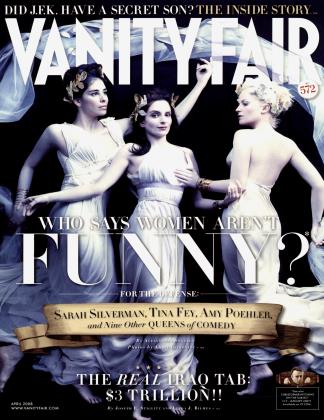Sign In to Your Account
Subscribers have complete access to the archive.
Sign In Not a Subscriber?Join NowHEROINE CHIC
FANFAIR
In the early 1930s, "good girl art" meant good drawings of beautiful women appearing in comic books, newspaper strips, and pulp magazines. Some were merely cheesecake; many others were endowed with extraordinary powers and portrayed as superheroes or archvillains. In his new book, Good Girl Art (Hermes), comics historian Ron Goulart chronicles the evolution of the art form which influenced the work of directors such as Federico Fellini, Roger Corman, and James Cameron, directly inspired action-adventure films such as The Matrix, Spider-Man, Fantastic Four, and Men in Black, and fueled the multi-billion-dollar animation and video-game industries.
Among the 175 full-color illustrations are Sheena, Queen of the Jungle—the first damsel not in distress ever to grace a comic's cover, back in 1940—scantily clad crime fighters Phantom Lady and the Black Cat, treacherous Madam Satan, and curvier-than-you-remember early versions of Betty and Veronica from squeaky-clean Archie Comics. Postwar puritanism covers up our less-than-dressed heroines, tamping down daring wartime exploits in favor of sexless sci-fi capers (Wonder Woman goes from proto-feminist Amazon to Miss Lonelyhearts, mooning away over a man) and goofy 60s-era romps. The 1970s usher in Red Sonja and other sirens, while the 80s and 90s see old favorites like Catwoman morph into pneumatic pinups.
H. SCOTT JOLLEY
 View Full Issue
View Full Issue






Subscribers have complete access to the archive.
Sign In Not a Subscriber?Join Now